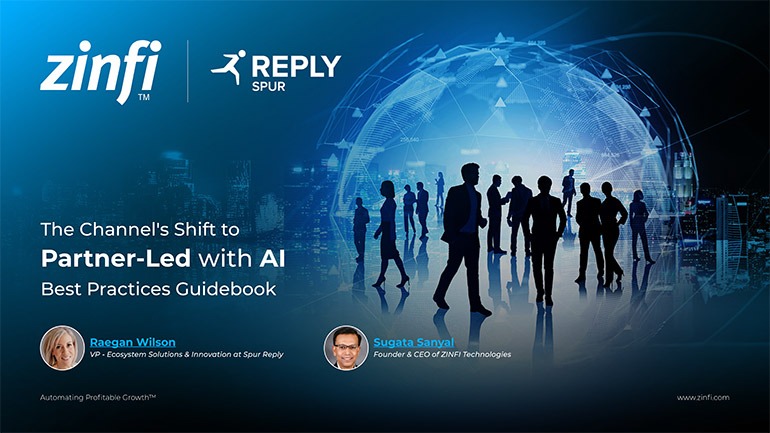Best Practices Articles

The Evolving Landscape of Partner Relationship Management and Ecosystems
Drawing insights from Theresa Caragol's "Partnering Success," the article emphasizes that effective partner relationship management is now a core strategic imperative, not just a supplementary sales function. It traces the evolution from traditional direct sales to sophisticated partner ecosystems, driven by market complexity and the need for specialized expertise. Regardless of market segment (SMB, mid-market, enterprise), a unified partner ecosystem strategy requires top-down commitment and adaptability. The piece highlights that while technology and market dynamics change, foundational principles like trust, joint value propositions, and co-selling remain timeless. Furthermore, it explores how AI amplifies these principles, enabling greater efficiency and insight in partner relationship management through tools like multilingual content creation and predictive analytics. Mastering this blend of human connection and technological innovation is key to unlocking exponential growth in the collaborative economy.
Key Takeaways
- The Evolution of Partnering: Partnering has transformed from a supplementary channel to a fundamental driver of exponential growth, necessitating a strategic shift beyond transactional engagements.
- Building Partner DNA: Organizations must proactively develop a "partner DNA," aligning all business facets with effective collaboration for sustainable growth.
- Unified Ecosystem Strategy: A cohesive partner ecosystem strategy is essential across all market segments (SMB, mid-market, enterprise), adapting to diverse business models while adhering to core principles.
- Enduring Principles: Trust, joint value propositions, and co-selling remain timeless foundations for successful partnerships, even amidst technological advancements.
- AI-Enhanced Partnering: Artificial Intelligence amplifies these enduring principles, enabling new levels of efficiency, insight, and scalability in partner relationship management through tools like multilingual content creation and predictive analytics.
Introduction: The Imperative of Modern Partnering
In today's rapidly evolving business landscape, the concept of partnerships has transcended its traditional boundaries, becoming an indispensable pillar of growth and market expansion. No longer a mere supplementary sales channel, a robust partner ecosystem is now recognized as a fundamental driver of exponential success for organizations across all industries. This paradigm shift is at the heart of discussions with visionary leaders like Theresa Caragol, founder and CEO of Achieve Unite and author of "Partnering Success: The Force Multiplier to Achieve Exponential Growth." Her insights illuminate how companies must fundamentally rethink their approach to collaboration, moving beyond transactional engagements to cultivate deep, strategic alliances that foster mutual value and sustainable growth. The essence of this transformation lies in the proactive development of a "partner DNA" within an organization, ensuring that every facet of the business is aligned with and optimized for effective collaboration. This article delves into the historical evolution of partner relationships, examines the current dynamics shaping these ecosystems, and explores the enduring principles that underpin successful partner relationship management in a world defined by rapid technological advancement and shifting market demands.
The journey from rudimentary channel programs to sophisticated partner ecosystems has been marked by significant milestones, driven by technological innovations and changing customer behaviors. Historically, channels were often viewed as a means to extend reach, particularly for hardware distribution or basic software reselling. The focus was mainly on direct sales, with partners serving primarily as fulfillment agents or lead generators at the periphery. However, as markets became more interconnected and customer journeys grew increasingly complex, the limitations of a purely direct approach became evident. The need for specialized expertise, localized support, and broader market penetration necessitated a more integrated model. This evolution has culminated in the modern understanding that partner relationship management is not just about managing transactions, but about nurturing a network of collaborators who collectively deliver enhanced value to the end customer. Theresa Caragol's work underscores that this is not merely a tactical adjustment but a strategic imperative that demands executive buy-in and a cultural shift towards collaborative growth.
This article will explore three critical dimensions of this evolving landscape. First, we will trace the historical trajectory of channel strategies, drawing on real-world experiences to illustrate the transition from direct-centric models to leveraged partnering. Second, we will analyze the contemporary dynamics of buyer motions across different market segments—SMB, mid-market, and enterprise—and the universal requirement for a cohesive partner ecosystem strategy. Finally, we will examine the timeless principles that govern successful partnerships, even as technology introduces new complexities and opportunities, emphasizing how innovations in partner relationship management software and artificial intelligence amplify these foundational concepts. By understanding these shifts and embracing a partner-first mindset, organizations can unlock unprecedented levels of growth and resilience in the competitive global marketplace. The insights shared by Theresa Caragol provide a compelling roadmap for any organization committed to mastering the art and science of effective partnering.
The Historical Trajectory: From Direct Sales to Leveraged Partnering
The history of channel strategies is a fascinating narrative of adaptation and evolution, reflecting broader technological changes, market dynamics, and customer expectations. The landscape was predominantly direct-sales driven in the early days of the tech industry, particularly during Theresa Caragol's initial foray into the sector. Companies often relied on their internal sales forces to reach customers, with partners playing a more peripheral, usually transactional, role. Theresa's experience working for a market source company that outsourced parts of the business to IBM, and later at Bay Networks and Nortel, provides a vivid illustration of this era. She recalls a time when "channel chiefs" were a distinct, often male-dominated, group, and her ambition to join their ranks underscored the emerging recognition of channels as a specialized business area. This period was characterized by a more linear and hierarchical approach to sales, where the vendor-distributor-partner-customer chain was clearly defined and often rigid. The emphasis was on pushing products through a pipeline, with less focus on the deeper partner relationship management that defines today's thriving ecosystems.
However, the limitations of a purely direct sales model soon became apparent, especially as technology became more complex and markets more globalized. The shift towards leveraged partnering began to accelerate, driven by the need for broader market reach, specialized technical expertise, and localized customer support that direct sales forces alone could not efficiently provide. Theresa's move to Sienna, a company with a strong service provider focus and a direct sales play, became a pivotal moment in her career and a testament to this evolving landscape. She recounts the challenge and ultimate success of transforming Sienna's approach, working with industry leaders to treat service providers as customers and partners. This pioneering effort involved building the first partner initiatives with major players like Comcast, demonstrating how to help them grow their business powered by Sienna. This motion, which has since evolved to encompass the growth of Managed Service Providers (MSPs), highlighted the immense leverage that could be gained by empowering partners to extend a company's reach and capabilities. It marked a significant departure from the transactional mindset, laying the groundwork for more strategic partner relationship management.
This historical evolution underscores a fundamental truth: how an organization can leverage its partners directly correlates with its potential for exponential growth. The past's binary, linear sales models, where a vendor sold to a distributor, who then sold to a partner, who in turn sold to a customer, were simpler to conceptualize but limited in their scalability and adaptability. Today, the landscape is far more nuanced, with multiple points of interaction and value creation. The lessons learned from these early transitions, particularly the recognition that partners are force multipliers, are more relevant than ever. Companies that successfully navigated this shift understood that investing in partner relationship management was about increasing sales and building a resilient and expansive network capable of delivering comprehensive solutions. This historical context provides a crucial backdrop for understanding why a robust and strategically managed partner ecosystem is no longer an option but a necessity for competitive advantage.
Contemporary Dynamics: Unifying Partner Ecosystem Strategy Across Segments
The delineation between SMB, mid-market, and enterprise buying motions has become increasingly apparent in the current business environment. Yet, the underlying imperative for a unified partner ecosystem strategy remains constant across all segments. Theresa Caragol emphatically states that a robust partner ecosystem is essential regardless of the tech company or the market segment it targets. This doesn't necessarily imply a vast network of hundreds of transactional partners; rather, it demands a deliberate strategy to partner effectively. The days when social media, AI, and extensive digital tools were absent meant that business growth was largely dependent on a physical Rolodex and attendance at industry events. This created a more binary and hierarchical sales structure. Today, the digital revolution has introduced an unprecedented number of leverage points and opportunities, allowing for a synergistic effect where the collective efforts of partners can yield exponentially greater results for the customer—a scenario where "one plus one plus one equals ten." This complex, interconnected landscape necessitates a sophisticated approach to partner relationship management that can adapt to the unique needs of each market segment while adhering to overarching strategic principles.
The transition from a simple, linear sales model to a complex, multifaceted partner ecosystem has fundamentally altered how businesses approach market penetration and customer engagement. In the past, the relationship was often straightforward: a vendor sold to a distributor, then sold to a partner, and finally, the partner sold to the customer. Software companies, in particular, often favored direct sales. This binary approach, while seemingly easier to manage in terms of direct control, severely limited scalability and innovation. Today, the notion of control and "owning" a customer is, as Theresa Caragol points out, a misnomer. Many touchpoints and trusted advisors influence the modern customer journey, making it impossible for any single entity to maintain absolute control. This realization frees organizations to embrace a more collaborative model, where the focus shifts from direct ownership to strategic co-selling and shared value creation. Effective partner relationship management in this context means fostering deep alignment across every rank and function of the organization, ensuring that all stakeholders understand and commit to the shared objectives of the partner ecosystem.

Adapting to diverse business models and partner profiles is critical to navigating these contemporary dynamics. While the fundamental methodology for building a partner ecosystem remains consistent across SMB, mid-market, and enterprise, the types of partners engaged and the specific business models employed may vary. For instance, an enterprise strategy might involve more strategic alliances, while an SMB focus could lean towards referral or transactional channel models. Crucially, Theresa emphasizes that partnering must start at the top, with the CEO and executive leadership aligning the partner ecosystem strategy with overarching corporate goals. Companies that relegate partnering to a mere "hobby" or a trial initiative often face a long and arduous journey to achieve meaningful results. The success stories, conversely, are those where partnering is embraced as a core way of life, integrated deeply into the organizational DNA. This top-down commitment and a flexible and adaptive approach to partner relationship management are paramount for thriving in today's diverse and dynamic market segments.
Enduring Principles: Trust, Co-Selling, and AI-Enhanced Partnering
Amidst the rapid changes in technology and market structures, certain fundamental principles of partnering remain constant, serving as the bedrock for successful partner relationship management. Theresa Caragol's "Partnering Success" framework highlights that while the external phenomena may differ, core concepts such as joint value propositions, business propositions, and co-selling are timeless. The acquisition of Ronor & Associates, with its 35 years of intellectual property and integration into Achieve Unite's AI engine, underscores this point. This blend of seasoned expertise with cutting-edge technology allows a deeper understanding of these enduring principles. The increased variety and velocity of today's market make it even more critical for organizations to be grounded in these concrete skills to achieve success in partnerships. Trust is the most vital of these foundational elements, which forms the foundation of all partnerships. Building confidence, however, is not merely intuitive; it is a science that involves understanding different "trust languages" and adapting communication and engagement strategies accordingly. This scientific approach to trust-building is a growing part of Achieve Unite's business, helping individuals and organizations cultivate stronger, more resilient partner relationships.
The concept of business acceleration forms the second core component of Theresa's framework, focusing on the operational aspects that drive tangible results within the partner ecosystem. This involves meticulous joint business planning, establishing a clear "North Star" or shared objective, defining measurable metrics, and forging win-win alliances to develop comprehensive solutions. These activities ensure that partnerships are based on goodwill and strategically aligned to achieve specific business outcomes. The third element, ecosystem influence, emphasizes how organizations engage with and leverage broader communities. This includes understanding the various communities partners operate in and how decisions are made within these networks. The proven model, supported by numerous case studies in "Partnering Success," demonstrates that companies adopting this holistic approach to partner relationship management experience significant growth and success. It reinforces that a successful partner program requires a deep understanding of collaboration's relational (trust) and operational (business acceleration) aspects, all within the context of a broader partner ecosystem.

The advent of Artificial Intelligence (AI) is not replacing these enduring principles but rather amplifying their impact and enabling new levels of efficiency and insight in partner relationship management. Theresa Caragol views Achieve Unite as an "AI service provider" that empowers clients to innovate and disrupt the status quo within the partner community. AI offers immediate, "no-brainer" use cases, such as global multilingual content creation, which can yield significant productivity and cost savings by reducing the need for traditional translators. The integration of knowledge banks, combining Achieve Unite's intellectual property with customer-specific data, represents the next frontier for AI-driven partnering. While acknowledging challenges like data silos and adoption resistance, particularly in large enterprises, Theresa emphasizes the importance of piloting new use cases and ensuring seamless integrations. For mid-market and SMBs, AI presents a unique opportunity to dramatically increase productivity and cost-effectiveness, enabling even novice professionals to perform at expert levels. This fusion of timeless partnering principles with advanced partner relationship management software and AI capabilities is pioneering a new era of collaborative growth, where trust and technology work hand-in-hand to unlock unprecedented potential within the partner ecosystem.
Conclusion: Mastering Partner Relationship Management for Future Growth
The journey through the evolving landscape of partner relationships and ecosystems reveals a clear and compelling truth: effective partner relationship management is no longer a peripheral function but a central strategic imperative for any organization aiming for sustained growth and competitive advantage. As discussed with Theresa Caragol, the shift from traditional, often transactional, channel models to dynamic, integrated partner ecosystems reflects a profound transformation in how businesses create and deliver value. The historical context shows a gradual but decisive move away from direct-centric approaches, driven by the increasing complexity of markets and the undeniable leverage that well-managed partnerships can provide. This evolution underscores the critical need for organizations to embed a "partner DNA" into their core operations, ensuring that collaboration is not just an activity but a fundamental way of doing business. The insights from "Partnering Success" and the practical experiences shared by Theresa Caragol provide a robust framework for navigating this complex terrain, emphasizing that strategic alignment and a commitment to long-term relationships are paramount.
The contemporary dynamics of diverse buyer motions across SMB, mid-market, and enterprise segments further highlight the necessity of a unified partner ecosystem strategy. While the specific tactics may vary, the underlying methodology for building and nurturing partnerships remains consistent. With its proliferation of social media, AI, and advanced analytics, the digital revolution has created an environment where synergistic value creation is not just possible but expected. This demands a sophisticated approach to partner relationship management that can adapt to the nuances of each market while maintaining a cohesive vision. Realizing that control over the customer journey is diffused across a network of trusted advisors frees organizations to embrace co-selling and collaborative value propositions. This strategic shift, driven from the top down, is essential for transforming partnerships from mere extensions of the sales force into true force multipliers that drive exponential growth and market penetration.
Ultimately, the future of partnering will continue to be shaped by a blend of enduring principles and disruptive technologies. Trust, joint value propositions, and effective co-selling are foundational to successful partner relationships. However, integrating advanced partner relationship management software and artificial intelligence is poised to revolutionize how these principles are applied, enabling unprecedented levels of efficiency, insight, and scalability within the partner ecosystem. From automating multilingual content creation to enhancing predictive analytics for partner performance, AI is transforming the operational landscape of partnering. Organizations that embrace these innovations, while remaining grounded in the timeless art of relationship building, will be best positioned to thrive. Theresa Caragol's vision for an AI-powered, trust-centric approach to partnering offers a compelling roadmap for businesses seeking to master partner relationship management and unlock their full potential in the collaborative economy of tomorrow. The journey ahead promises continued evolution, demanding adaptability, strategic foresight, and an unwavering commitment to the power of partnerships.
Best Practices Guidebook
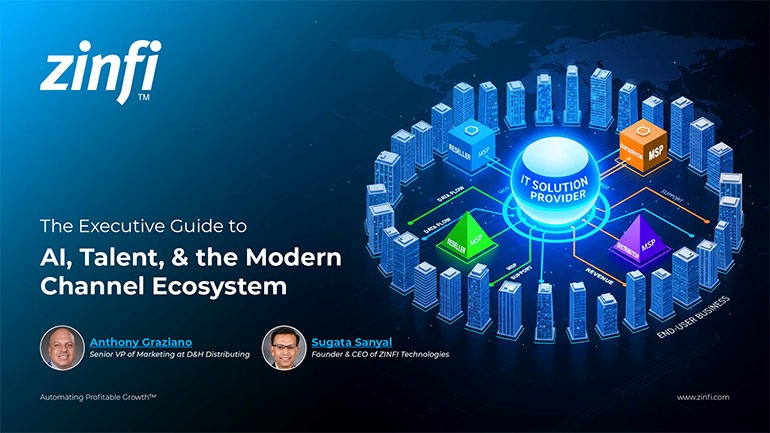 Modernizing Channel Marketing: AI and Ecosystem Enablement Best Practices
Modernizing Channel Marketing: AI and Ecosystem Enablement Best PracticesDownload for FREE
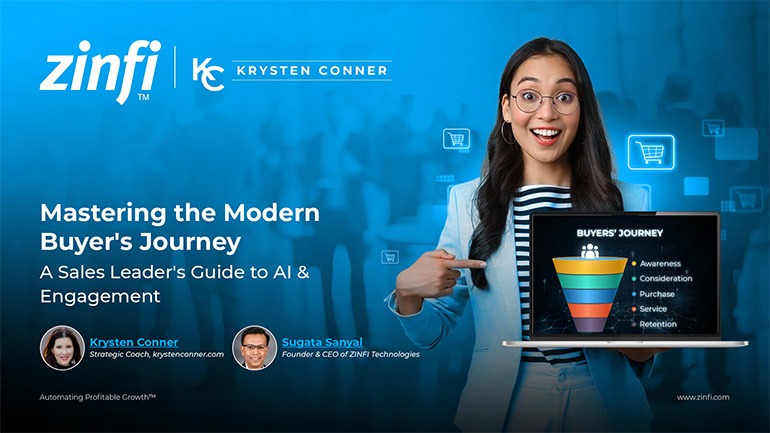 The Channel’s Shift to Partner-Led With AI Best Practices
The Channel’s Shift to Partner-Led With AI Best PracticesDownload for FREE
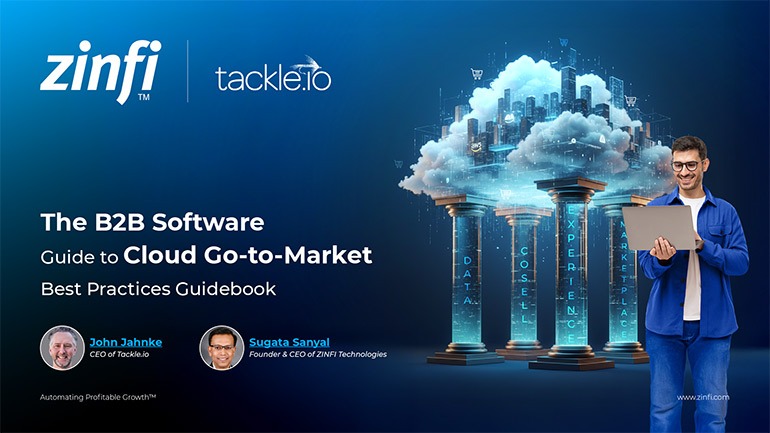 Hyperscalers, ISVs, and AI: Shaping the Future of B2B Software Distribution
Hyperscalers, ISVs, and AI: Shaping the Future of B2B Software DistributionDownload for FREE
 Definitive Guide to a Partner Ecosystem-First Sales Strategy
Definitive Guide to a Partner Ecosystem-First Sales StrategyDownload for FREE
 The Partner-Led Digital and AI Transformation Best Practices
The Partner-Led Digital and AI Transformation Best PracticesDownload for FREE
 Startup Talent Recruitment: Hiring Missionaries, Not Mercenaries
Startup Talent Recruitment: Hiring Missionaries, Not MercenariesDownload for FREE
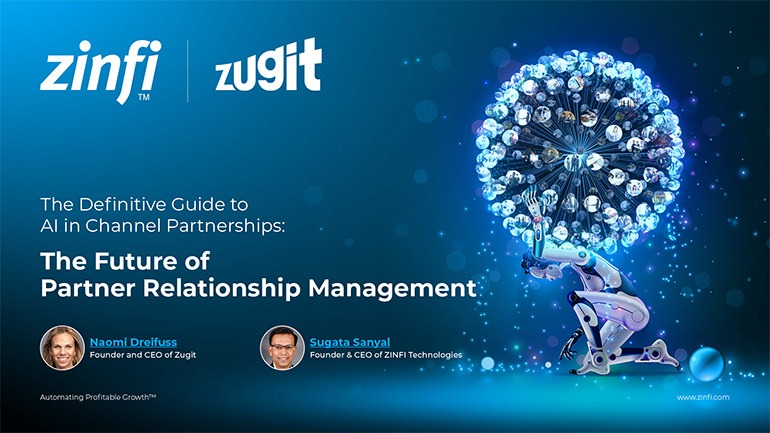 The Future of Partner Relationship Management with AI in Partnerships
The Future of Partner Relationship Management with AI in PartnershipsDownload for FREE
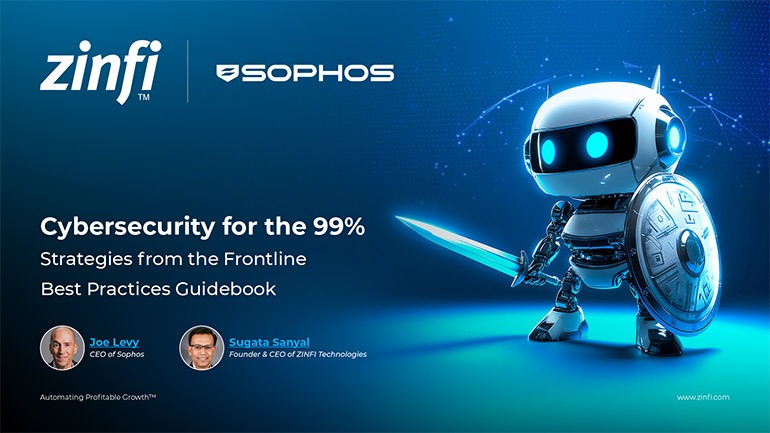 Cybersecurity for the 99%: Strategies from the Frontline
Cybersecurity for the 99%: Strategies from the FrontlineDownload for FREE
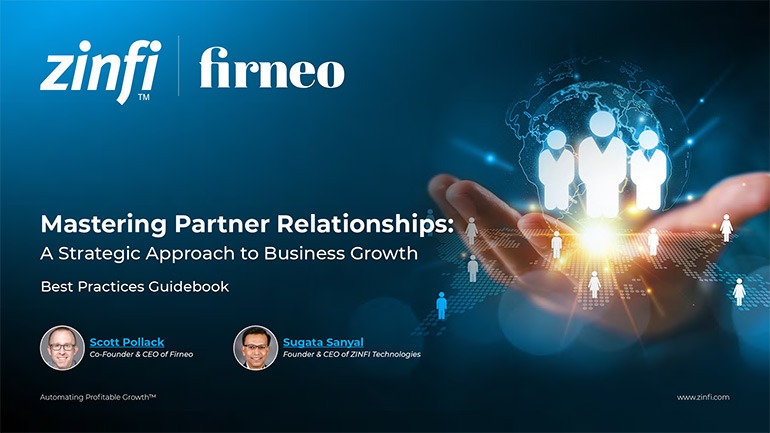 Mastering Partner Relationships: A Strategic Approach to Business Growth
Mastering Partner Relationships: A Strategic Approach to Business GrowthDownload for FREE
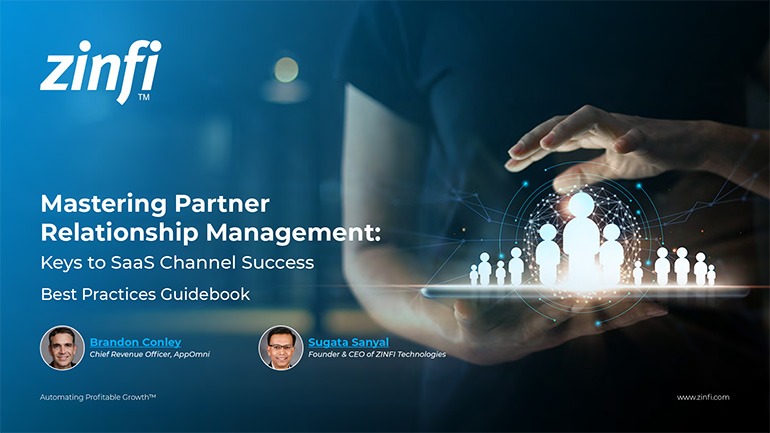 Mastering Partner Relationship Management: Keys to SaaS Channel Success
Mastering Partner Relationship Management: Keys to SaaS Channel SuccessDownload for FREE
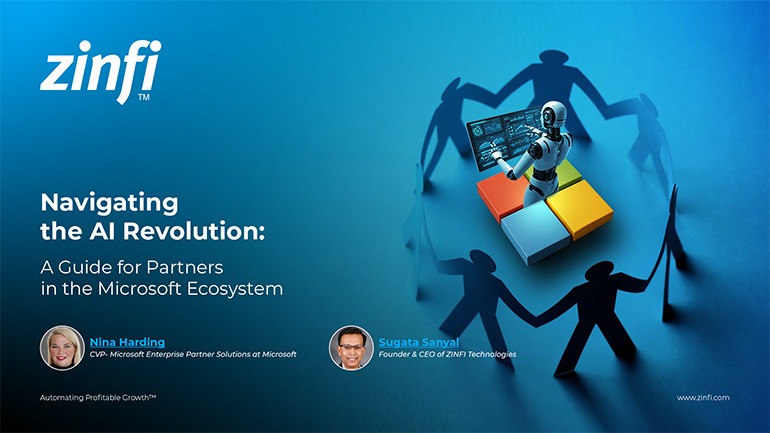 Navigating the AI Revolution: Guide for Partners in the Microsoft Ecosystem
Navigating the AI Revolution: Guide for Partners in the Microsoft EcosystemDownload for FREE
 Mastering the Modern Buyers Journey: Sales Leader’s Guide to AI & Engagement
Mastering the Modern Buyers Journey: Sales Leader’s Guide to AI & EngagementDownload for FREE

